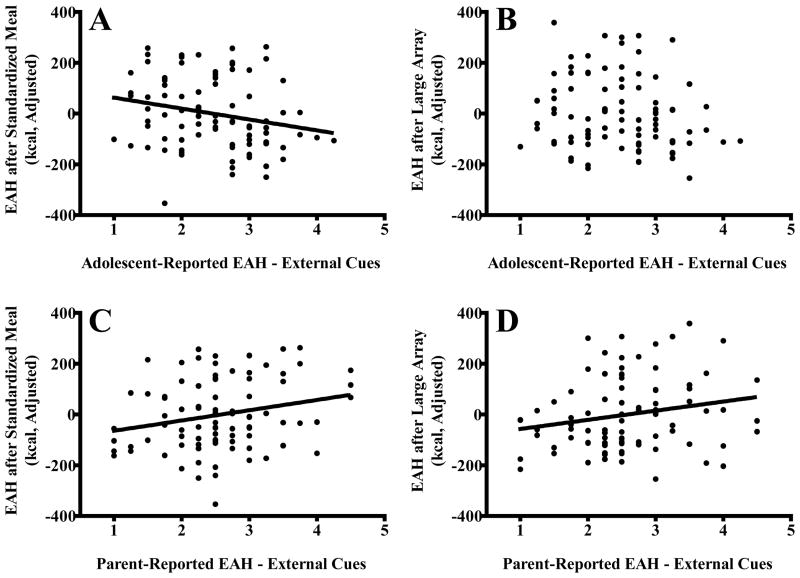Figure 1.
Associations of adolescent-reported eating in the absence of hunger (EAH) in response to external cues and adolescent observed EAH after a standardized lunch meal (A; β = −0.23, P = 0.03) and EAH after an array lunch meal (B; β = −0.17, P = 0.11), and associations of parent-reported EAH in response to external cues and adolescent observed EAH after a standardized lunch meal (C; β = −0.30, P = 0.01) and EAH after an array lunch meal (D; β = −0.26, P = 0.03). All analyses adjusted for adolescent age (years), sex, race (Non-Hispanic White vs. Other), puberty (pre/early/mid vs. late), percent fat mass, fat-free mass (kg), height (cm), and prior meal energy intake (standardized lunch meal or array lunch meal).

